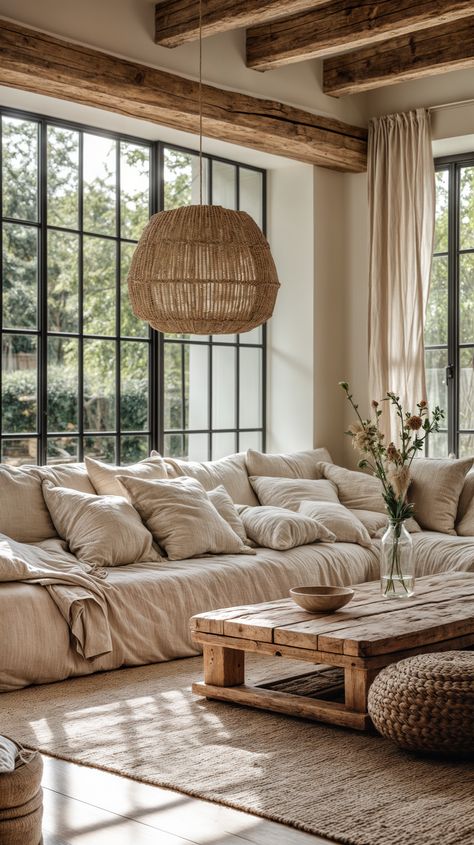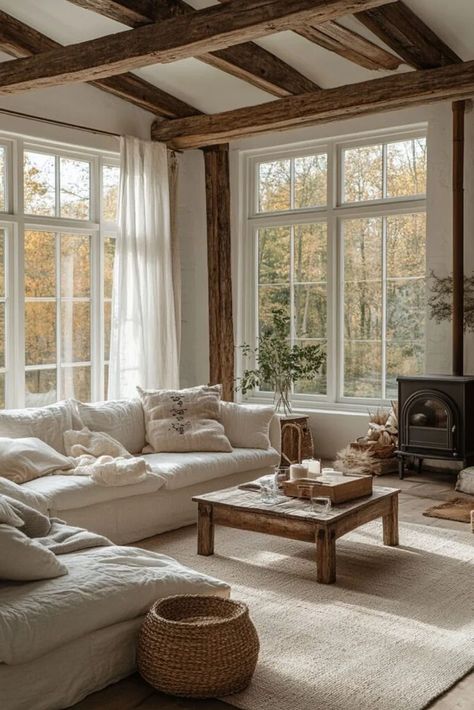Ever feel like your home is perfect one season and unbearable the next? You’re not alone. Staying comfortable all year isn’t just about the thermostat—it’s about how well your home adapts to changing weather.

With rising energy costs and unpredictable seasons, more people are looking for smarter ways to stay cozy and cool. That means better systems, thoughtful upgrades, and a new way of thinking about comfort.
In this blog, we will share how to keep your home feeling good year-round, with practical ideas that fit today’s needs.
Why Seasonal Comfort Isn’t Just About Temperature
It’s easy to blame the weather. But comfort at home isn’t only about how hot or cold it is outside. It’s about how your space responds to it. Drafty windows, outdated systems, poor insulation—they all add up. And they don’t just affect how you feel. They hit your wallet too.
Over the past few years, energy costs have climbed, forcing many homeowners to look closer at how efficiently their homes run. The shift toward energy-conscious living isn’t just a trend anymore. It’s a practical necessity. Whether you’re working from home, raising a family, or aging in place, your space has to work harder—and smarter.
That’s why some of the biggest changes in home comfort today are happening in the systems behind the scenes. Heating and cooling units are being redesigned to use cleaner, safer materials. For example, many homes now use a new AC refrigerant that’s more efficient and less harmful to the environment than older versions. It’s a shift you might not notice right away—but your comfort (and electric bill) will.
Staying cozy in the winter and cool in the summer doesn’t require a full home makeover. But it does mean understanding how your home breathes, where the gaps are, and how to make improvements that actually last.


The Role of Insulation and Airflow
Before you replace anything, look at how your home holds air. Insulation is one of the most overlooked aspects of comfort. You don’t see it, so it’s easy to forget. But it does the heavy lifting all year long.
When insulation is done right, it keeps warmth in during cold months and blocks heat during summer. Without it, even the best AC unit is just working overtime. Walls, attics, crawlspaces—they all need attention. And so do your doors and windows. Small gaps can have a big effect. Weatherstripping, caulking, and updating older panes can go a long way.
Airflow also matters. It’s not enough to pump warm or cool air into a room if it can’t circulate. Blocked vents, clogged filters, and poor duct design all weaken the system’s impact. Sometimes, simple maintenance like cleaning out filters or adjusting ceiling fans by season makes a noticeable difference.
Comfort doesn’t always require big tech. Sometimes, it’s just making sure the air moves the way it’s supposed to.
Smarter Tech, Smarter Comfort
Thermostats used to be set-and-forget. Now, they’re more like home assistants. Smart thermostats learn your patterns and adjust based on when you’re home, asleep, or away. That not only saves energy—it creates a more stable environment. No more walking into a stuffy house after work or waking up freezing at 2 a.m.
These tools work best when paired with a system that’s up to date. Many older HVAC systems weren’t built for today’s demands—or today’s technology. If your system is more than 10–15 years old, it may be time to look at an upgrade. The goal isn’t just to cool faster or heat better. It’s to do both using less power and better materials.
And while the upgrades aren’t always cheap, they often pay off. Lower bills, fewer repairs, and better resale value all add up. If you plan to stay in your home for a while, comfort becomes an investment worth making.


Why Comfort Is Personal (and That’s a Good Thing)
One person’s “perfect” is another person’s “too hot.” That’s why flexibility matters. Zoned systems, for example, let you control temperatures in different parts of the house. That means grandma can keep her room toasty without making the rest of the family sweat. It also helps prevent the constant thermostat wars that happen in shared spaces.
Beyond temperature, comfort can also mean clean air. Allergies, dust, and pet dander all affect how we feel indoors. Air purifiers and better filters don’t just improve health—they can make a space feel more breathable, more open. It’s not always about heat or cold. Sometimes it’s just about air that feels light instead of heavy.
Looking Ahead: Sustainability and Simplicity
There’s growing awareness around how our homes impact the planet. Energy use, emissions, waste—homeowners are thinking about more than just the inside of their walls. That’s led to a new focus on materials and systems that are both sustainable and low-maintenance.
It’s not about giving up comfort. It’s about finding better ways to get it. Newer systems are designed to be more efficient without losing performance. Materials are being tested for durability and safety. And the movement toward smarter homes is helping people stay comfortable and reduce their footprint.


Small Changes, Big Impact
You don’t need to renovate your entire house to feel more comfortable. Start small. Seal the leaks. Replace the filters. Pay attention to how your space feels in the afternoon versus early morning. These little observations help guide what changes are worth making.
Even something as basic as moving furniture away from vents or using blackout curtains during peak sunlight hours can shift how a room feels. Home comfort isn’t one big fix—it’s a series of small, smart choices that add up.
And once you’ve made those adjustments, the difference is real. Rooms feel more consistent. Utility bills flatten out. You spend less time fiddling with the thermostat and more time enjoying your space.
Living Better Starts at Home
Comfort isn’t a luxury—it’s the baseline for everything else. When your home feels steady, so do you. You sleep better, focus better, and move through your day with more ease.
Creating that environment takes intention. It means paying attention to things that don’t always shout for attention—like airflow, insulation, or how your system works behind the scenes. But when all of those things come together, you feel it. Not just in your body, but in your day-to-day mood.
A home that stays cozy and cool all year isn’t just a place that adjusts to the weather. It’s a space that works with you, not against you. And once you’ve felt that difference, you won’t want to go back.
- 28shares
- Facebook0
- Pinterest25
- Twitter3
- Reddit0












